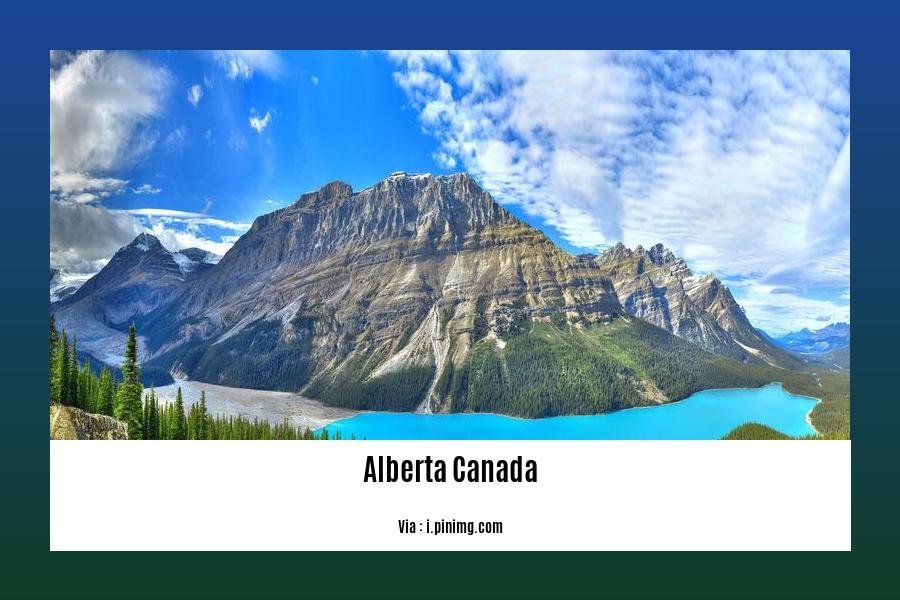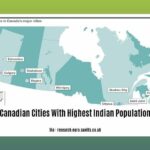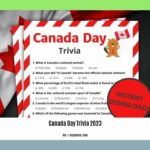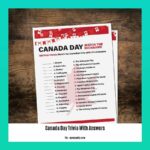Discover the mesmerizing allure of Alberta, Canada as we delve into its captivating tapestry of hidden wonders and vibrant culture. From its origins, named after Princess Louise Caroline Alberta, to its prominent position as the heart of the Canadian Oil Industry, Alberta boasts a rich and diverse history that is waiting to be explored. As we unearth fascinating facts about this province, we cannot forget the indigenous people who were the first Albertans, and whose heritage continues to shape the landscape. As Canada’s fourth largest province, Alberta is a treasure trove of breathtaking landscapes, teeming wildlife, and thriving cities that are warmed by the genuine hospitality of its locals. Join us on this immersive journey as we uncover the secrets that make Alberta a truly remarkable destination.
Key Takeaways:
- Alberta is the fourth largest province in Canada and is named after Princess Louise Caroline Alberta, the fourth daughter of Queen Victoria.
- It became a province in 1905 and was previously a part of the Northwest Territories.
- Alberta boasts a diverse landscape, including mountains, prairies, badlands, forests, and lakes.
- The province is known for its prominent oil industry and strong agriculture sector.
- Rachel Notley made history as the youngest person to lead a government in Canada when she became the premier of Alberta in 2015.
Facts About Alberta Canada
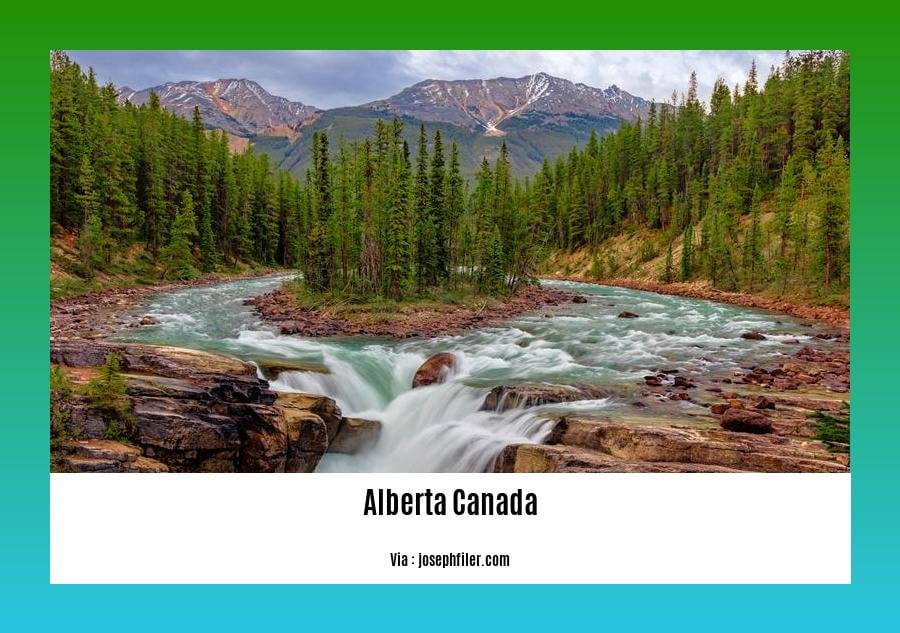
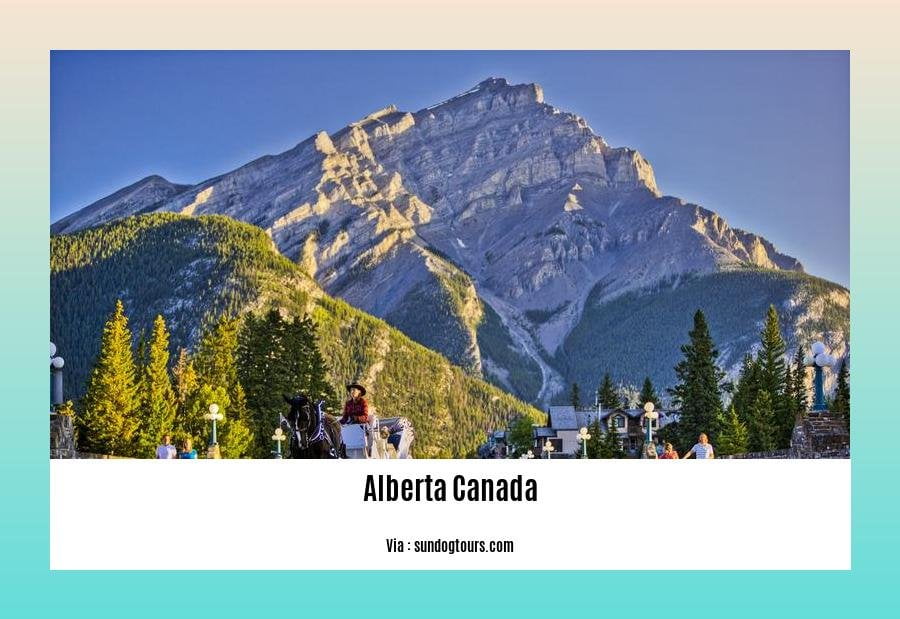
Alberta, Canada is a captivating province that is rich in natural wonders, vibrant culture, and intriguing history. Let’s dive into some fascinating facts about Alberta:
1. Named After Royalty
Did you know that Alberta is named after Princess Louise Caroline Alberta, the fourth daughter of Queen Victoria? This regal connection adds a touch of elegance to the province’s identity and heritage.
2. Diverse and Breathtaking Landscapes
Alberta boasts a diverse landscape that will leave you in awe. From majestic mountains such as the Canadian Rockies to vast prairies, from intriguing badlands to lush forests, and from serene lakes to roaring rivers, this province has it all. Imagine exploring the towering peaks, breathing in the fresh air, and immersing yourself in the stunning natural beauty that surrounds you.
3. Fourth Largest Province in Canada
Covering a massive area, Alberta proudly holds the title of being the fourth largest province in Canada. This vast expanse provides plenty of room for adventure, exploration, and discovery.
4. Rich in Natural Resources
Alberta is famous for its abundant natural resources. It is home to the largest oil industry in Canada, contributing significantly to the country’s economy. The province also has a strong agriculture sector, known for its livestock and crop production. Alberta’s natural resources play a crucial role in its growth and development.
5. Historic Journey to Provincehood
Before becoming a province in 1905, Alberta was a part of the Northwest Territories. Its journey to provincehood marked a significant milestone in Canadian history. Today, Alberta stands proud as a thriving province that beautifully combines its past with modern progress.
6. Rachel Notley’s Landmark Achievement
In 2015, Rachel Notley made history by becoming the premier of Alberta, becoming the youngest person to ever head a government in Canada. Her achievement showcases the province’s commitment to progress, inclusivity, and female empowerment.
From the royal connection of its name to its diverse landscapes, rich resources, and historic milestones, Alberta encompasses a tapestry of captivating facts that make it a must-visit destination. Plan your trip to Alberta, and uncover the hidden wonders and vibrant culture that await you in this remarkable province.
Sources:
– Alberta Facts
– Alberta Facts – Facts About Canada
Here are some fascinating facts about Edmonton, a city known for its vibrant culture and stunning landscapes. Discover more about this vibrant city and its rich history by exploring our article on facts about Edmonton.
Uncover intriguing tidbits about Edmonton, Alberta, Canada, a city where natural beauty and urban charm coexist in perfect harmony. Delve deeper into the wonders of this captivating city by browsing through our article on facts about Edmonton, Alberta, Canada.
Did you know that Indianapolis, the capital city of Indiana, has a fascinating history and a thriving arts scene? Learn more interesting facts about this captivating city by delving into our article on facts about Indianapolis.
The first Albertans were indigenous people, who arrived in Alberta between 10,000 and 8,000 years ago from Siberia and Alaska via the Bering Strait. They were the original inhabitants of the land, establishing rich and diverse cultures long before European settlers arrived.
The indigenous peoples of Alberta can be broadly categorized as First Nations or Plains Indians, excluding the Inuit and the Métis. Within the province, there are 46 First Nations communities, each with their own unique traditions, languages, and histories.
The Chipewyan and Woodland Cree tribes in northern Alberta were skilled trappers and fishers, relying on the abundant natural resources for their sustenance. On the other hand, the southern Plains Cree and Blackfoot Confederacy tribes depended on buffalo for survival, with these majestic creatures providing them with meat, hides, and other essential materials.
It is estimated that there were around 116,670 First Nations people in Alberta according to the 2011 Census. Of this population, 96,730 individuals had a registered Indian Status, while 19,945 identified as First Nations without registered Indian Status. These individuals are an integral part of Alberta’s cultural fabric, contributing to its rich heritage and contemporary diversity.
Language plays a significant role in preserving indigenous culture, and in Alberta, approximately 45% of First Nations people living on reserves reported the ability to hold a conversation in an Aboriginal language. Cree, Blackfoot, and Stoney are some of the most commonly spoken languages among these communities, providing a strong connection to their ancestral roots.
While the indigenous peoples were the first inhabitants of Alberta, the first European to reach the region was likely a Frenchman, Pierre La Vérendrye, who established forts and traded furs with the native peoples in 1730. This marked the beginning of a complex and often tumultuous relationship between the indigenous populations and European settlers.
Key Takeaways:
– The first Albertans were indigenous people who arrived in the region over 8,000 years ago.
– The indigenous peoples of Alberta can be grouped into First Nations or Plains Indians.
– There are 46 First Nations communities in Alberta, each with their own traditions and languages.
– The Chipewyan and Woodland Cree tribes were skilled trappers and fishers, while the Plains Cree and Blackfoot Confederacy tribes relied on buffalo for survival.
– Approximately 45% of First Nations people in Alberta can hold a conversation in an Aboriginal language.
– The first European to reach Alberta was likely Pierre La Vérendrye, a French fur trader.
– The history and culture of indigenous peoples in Alberta are an integral part of the province’s identity and should be appreciated and respected.
[Source 1]: Alberta – History and Culture – iExplore: https://www.iexplore.com/articles/travel-guides/north-america/canada/alberta/history-and-culture
[Source 2]: First Nations in Alberta – Wikipedia:
Alberta is Canada’s 4th Largest Province
Alberta, Canada’s fourth-largest province, encompasses an expansive area of 661,848 km2 (255,541 sq mi) and is home to 4,262,635 people. With its diverse landscapes and vibrant cities, Alberta offers a wealth of hidden wonders and fascinating cultural experiences.
Natural Wonders that Capture the Imagination
Key Takeaways:
– Alberta is home to the Canadian Rocky Mountains, Banff National Park, Jasper National Park, and Lake Louise.
– These natural wonders attract tourists from around the world, offering breathtaking landscapes and opportunities for outdoor adventures.
When it comes to natural wonders, Alberta doesn’t disappoint. The majestic Canadian Rocky Mountains dominate the province’s landscape, providing a stunning backdrop for outdoor enthusiasts and nature lovers. Banff National Park, nestled in the heart of the Rockies, offers picturesque views, mesmerizing hiking trails, and opportunities for wildlife spotting. Jasper National Park is another gem, boasting towering glaciers, turquoise lakes, and an abundance of wildlife. And let’s not forget about the enchanting Lake Louise, with its crystal-clear waters and surrounding peaks. These awe-inspiring destinations showcase Alberta’s grandeur and make it a paradise for photographers and adventurers alike.
Celebrated Personalities and Cultural Icons
Key Takeaways:
– Alberta has produced renowned individuals such as Wayne Gretzky, a hockey legend, and Joni Mitchell, a beloved singer-songwriter.
– The province has a rich history of producing successful people in various fields.
Alberta’s vibrant culture extends beyond its natural landscapes. The province has given rise to many talented individuals who have left an indelible mark on the world stage. Wayne Gretzky, known as “The Great One,” hails from Alberta and has cemented his legacy as one of the greatest hockey players of all time. Joni Mitchell, a talented singer-songwriter, has captivated audiences with her heartfelt lyrics and soulful melodies. These individuals represent just a fraction of the many remarkable talents Alberta has produced throughout history. Exploring their stories adds depth and diversity to the overall tapestry of Alberta’s cultural heritage.
A Diverse Economy with Thriving Industries
Key Takeaways:
– Alberta is renowned for its oil and gas production, boasting most of western Canada’s oil refinery capacity.
– Agriculture is another key industry in Alberta, with the province being a major producer of wheat, barley, and canola.
– Tourism thrives in Alberta, thanks to its natural attractions, drawing visitors from across the globe.
Alberta’s economic landscape is as diverse as its geographical diversity. The province is widely recognized for its flourishing oil and gas industry, with a significant portion of western Canada’s oil refinery capacity located here. Alberta’s rich natural resources contribute to the province’s economic prosperity and have made it a hub for energy production. Moreover, agriculture plays a vital role in Alberta’s economy, with the region being a substantial contributor to Canada’s wheat, barley, and canola sectors. The province also entices tourists worldwide, thanks to its unrivaled beauty. Whether it’s exploring the Rockies, immersing in cultural festivals, or embarking on wildlife adventures, Alberta’s tourism industry offers a multitude of opportunities.
Embracing the Climate and Celebrating Diversity
Key Takeaways:
– Alberta’s climate varies across the province, with the southern region experiencing a semi-arid climate and the northern region a subarctic climate.
– The province’s diverse climate adds to its allure, catering to various preferences and outdoor activities.
Alberta’s climate showcases the province’s diverse nature. In the southern region, a semiarid climate prevails, with hot summers and cold winters. This climate fosters a range of outdoor pursuits, from hiking and biking to golfing and wildlife exploration. In contrast, the northern region of Alberta experiences a subarctic climate, characterized by long, cold winters and short, cool summers. This climate sets the stage for winter sports and activities like snowboarding, ice fishing, and ice climbing. Alberta’s climate diversity ensures there are captivating experiences for every season and every type of adventurer.
Key Takeaways:
- Alberta, Canada’s fourth-largest province, offers a wealth of natural wonders, cultural icons, and economic opportunities.
- Banff National Park, Jasper National Park, the Canadian Rocky Mountains, and Lake Louise showcase Alberta’s breathtaking landscapes.
- Personalities like Wayne Gretzky and Joni Mitchell hail from Alberta, adding richness to the province’s cultural heritage.
- Alberta’s varied economy encompasses industries such as oil and gas, agriculture, and tourism.
- The climate varies across the province, catering to different outdoor pursuits and preferences.
Sources:
– Alberta Facts for Kids. Retrieved from kids.kiddle.co/Alberta
– Alberta – Wikipedia. Retrieved from en.wikipedia.org/wiki/Alberta
FAQ
Q1: Why is Alberta named after Princess Louise Caroline Alberta?
A1: Alberta is named after Princess Louise Caroline Alberta, the fourth daughter of Queen Victoria. This was done to honor her since she was married to the Marquess of Lorne, who was the Governor General of Canada at the time of Alberta’s establishment as a province.
Q2: How important is the Canadian Oil Industry to Alberta?
A2: The Canadian Oil Industry is of significant importance to Alberta. The province is known for having the largest oil industry in Canada, contributing to its economy and employment opportunities. The oil and gas production in Alberta is vital for the region and has a major impact on the province’s economic growth.
Q3: Who were the first inhabitants of Alberta?
A3: The first inhabitants of Alberta were indigenous people. They arrived approximately 10,000 to 8,000 years ago from Siberia and Alaska, crossing the Bering Strait. The Chipewyan, Woodland Cree, Plains Cree, and Blackfoot Confederacy tribes were among the early inhabitants, each with their unique ways of life and reliance on the land for survival.
Q4: How does Alberta rank in terms of size among Canadian provinces?
A4: Alberta is Canada’s fourth largest province in terms of both area and population. It covers an area of 661,848 km2 (255,541 sq mi) and is home to approximately 4,262,635 people. Despite being a relatively small portion of Canada’s landmass, Alberta has a significant presence and influence within the country.
Q5: What are some highlights of Alberta’s vibrant culture?
A5: Alberta’s vibrant culture is showcased through its diverse population, rich history, and thriving arts scene. The province has produced many notable individuals in various fields, including sports, music, and literature. Additionally, Alberta’s Indigenous peoples have a strong cultural presence, contributing to the province’s cultural tapestry through traditional practices, arts, and storytelling.
- SYBAU See You Baby Meaning: Gen Z Slang Evolves - July 1, 2025
- Unlock Your Inner Youth: Lifestyle Secrets for a Vibrant Life - July 1, 2025
- Decode SYBAU Meaning: Gen Z Slang Explained - July 1, 2025
